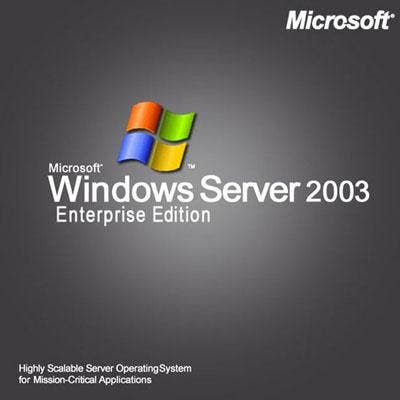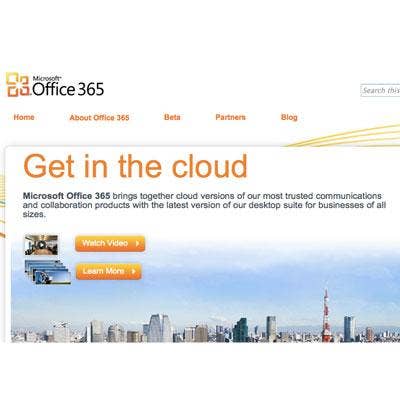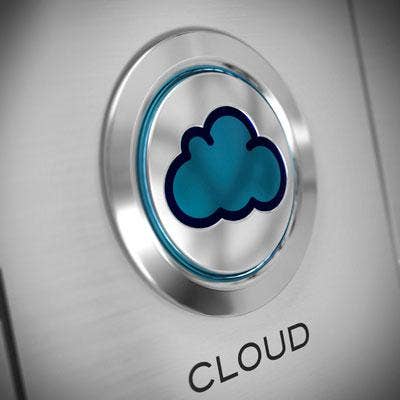Q&A: Insight CEO Talks Partner Program Changes, End Of Server 2003 And More

PC, Server Sales Surge For Insight, But Microsoft Partner Changes A Drag
Insight Enterprise's most recent quarter was a mixed bag, with notebook, desktop and server sales tied to the expiration of Windows XP and Windows Server 2003 driving revenue up 4 percent to $1.45 billion.
But earnings for the Tempe, Ariz.-based company, No. 14 on the CRN Solution Provider 500, fell 6 percent to $22.6 million due to changes Microsoft is making around its partner compensation model, particularly relating to cloud sales commissions and Office 365 incentive fees.
Insight CEO Ken Lamneck spoke with CRN about the financial impact of those changes, opportunities related to the Server 2003 expiration and why the company is looking to hire new salespeople in North America.

What is the most significant development from the past quarter for Insight?
It was good that we had growth in constant currency … Our constant currency global growth was 6 percent for the quarter, so we're pleased with the progress that we're making there. We're actually investing quite a bit in people to continue to grow the business. The year-over-year earnings actually declined just a little bit because we're making more investments in people to grow the business. We're pretty bullish on that. In the second half of the year, we added 160 new people to the business, primarily in sales-type functions, and we'll continue to add a like amount in 2015.

Why have you decided to add personnel at this time?
We can better take advantage of the market opportunities that are out there … We're continuing to see services grow very nicely for us in 2015. We'll see software sales grow. And on the hardware front, I'm sure you're tracking the Windows Server 2003. So we're starting to see some momentum build there around server growth for that, and we think that will continue into 2015 as companies sort of get forced by Microsoft to convert to a new operating system that will require them to update their applications, obviously update their server world. That will drive a significant spend in IT this year.

Are the new personnel focused on any particular areas?
A good portion of them will be focused on cloud. And we're continuing to add people in verticals, such as K-12, service provider and health care. And then we'll continue to add people into our services sellers, to basically have services account executives. And then we also will continue to invest and add salespeople in the specific city plans we have in the U.S. We're not going to add that many net new in the EMEA as they've done a lot of that hiring already in the past year in 2014 … APAC is the same; we'll add a few people here and there, but not a significant amount.

What opportunities do you see for Insight in the cloud and for PCs?
We're all seeing, of course, the opportunity around SaaS, so solutions around messaging, solutions around collaboration are very, very strong. On the infrastructure side, we see solutions around Azure, SoftLayer, where clients are looking for basic compute. They're looking for basic things around backup, disaster recovery. So Infrastructure-as-a-Service provides a pretty economical way for them to get that done … We caught the tail end of Windows XP migration -- that was still healthy there. That, I think, is in the late innings now, so we think we'll start to see more normalized growth in the desktop and notebook arena this coming year.

What opportunities do you see for Insight in key verticals?
They're all fast-growing segments of the business. So service providers are, of course, capitalizing on the migration toward the cloud -- very fast-growing. K-12 has, in the past few years and will continue to get more investment to upgrade the infrastructure of schools to really allow students to take advantage of what technology can offer, so that's very fast-growing. And, of course, health care continues to get more investment in IT as they look to become more productive as a business entity.

How much of that health-care spend is being driven by the Affordable Care Act?
It's really hard to quantify that specifically, but it's all wrapped together as hospitals try to become more efficient with all the different EMR solutions. A difficult number to get our arms around, but when we track the overall growth, we certainly see that. It's clear to the hospitals that they've got to become more efficient, they've got to become more productive. The best avenue to do that is through IT.

What is Insight doing to prepare for the Windows Server 2003 expiration?
We've been on that journey for probably the last six months. A lot of it has been around initially educating clients, helping clients do the proper assessment of their environments and then being able to provide the very critical services that help enable us to do that because, in many cases, it's not like they've got resources in play that can actually do that kind of work. We've been very helpful to our clients ... on the services side. And, you know, directing them as to how they should look at the problem.

What options do clients with Server 2003 have?
[Clients should consider] what areas they should look at actually just migrating servers. Should they virtualize those servers? Should they consider a cloud-type solution for their environment? It's a pretty detailed, almost architectural, analysis that needs to be done for clients. Some clients are finally realizing that July is around the corner, and unlike an XP migration, this requires a lot of work. A lot of the applications have to be written. So there's a good amount of runway needed to make sure they are prepared. They'll face some significant costs if they need Microsoft to come in and assist them after July.

Where are we now in terms of the spend cycle?
I think we're starting to see it as we speak. I think it's not going to be all over by July -- I don't think our clients are going to be able to get it done. I think you'll see this spend throughout 2015 in total. It's definitely going to go beyond July because there's simply too much work that has to be done. Some clients are starting late to address the problems.

What options are available for clients?
Certainly clients could do nothing. That's an option for them. They'll run into some issues around security and security patches that won't be supported going forward. But some of them actually probably will keep some very specific old applications running because it's too difficult to convert those applications over to the new environment. So the real crux of it is that you're going from an operating system that was 32-bit to an operating system that's 64-bit, so that requires, again, that the applications be rewritten; that requires new server technology.

What about for clients that are looking to upgrade?
Clients then, of course, can say, "I'm going to upgrade my current servers. I'm going to upgrade to the new 64-bit operating system." And then they could basically upgrade their current applications. So they could keep that in an on-premise world, and many clients will do that because it's simpler. They'll virtualize the environment to become more efficient, but that could be a simpler solution for them to at least mitigate any risks and be maybe the most cost-effective solution.

What potential does cloud hold as an alternative?
Others might look to say, "Geez, why don't I take the opportunity to rearchitect this. And could I do some of this in the cloud?" That's a little bit more extensive process because, again, applications have to be written, and you have to make sure it's cloud-ready and it's enabled in the cloud. So if clients are proactive, they can actually get it done. But I think the majority of clients you'll actually see probably continue to migrate to an on-premise world.

Does it looks like many, or most, of your clients are staying with Microsoft?
I think from an OS point of view, some of them will entertain the open source forum, but I think the majority of them, from what we can tell at this point, will continue to stay with the Microsoft opportunity. Then, of course, from a server front, certainly people like HP, it's people like Dell, it's people like Lenovo now with IBM's new x86 hardware acquisition where they'll be the primary beneficiaries of the hardware platform that companies use to migrate to.

What are some of the key opportunities for Insight in services?
We're heavily involved from the services front in what we call Retail Ready, where we've got an extensive service-delivery arm of over 1,000 people in the U.S. So we've assisted clients like Regis, which owns a lot of entities such as SuperCuts hair salon. We've assisted them as they obviously take their locations to become more enabled than just doing credit-card-type of work. They can now do lots of different things with their clients that they could never do before because they're starting to build IP into those storage structures. We do it with many, many other clients as well.

Any there any other major retailers you've helped?
A few that allow us to use their names is Red Wing Shoes, and then John Varvatos, the clothes retailer. We're doing a lot of work around their facilities, as well, to enable them to upgrade their infrastructure that really enables them to get to that sort of omni-retail approach, where, basically, the sort of convergence and synergy of both online as well as retail [is] coming together. So big opportunities there. And, as you know, many of those retail locations don't have staffs of people that can do this type of work, and we've got the ability to do this on a nationwide basis with lots of experience.

What software opportunities has Insight been pursuing?
Office 365 is really strong. Microsoft's done a great job there in providing good messaging solutions in the cloud for clients, and Office 365 is growing very, very strongly. We see virtualization, of course, continue to gain strength in the marketplace. Security, of course, becomes a bigger issue, so companies like McAfee and Symantec continue to grow nicely. So, overall, the trends continue to support good growth in software for the industry.

What, specifically, were the changes made in the vendor partner program?
One of our key partners a few years ago announced that they would make partner program changes to basically pay less fees for certain things that some of the channel partners were performing for them. It impacts us because these migrate over a three-year period, as far as these enterprise agreements … We're through the toughest period of that this past year, we mitigated it quite a bit, but it still had a financial impact. We talked about next year, that we expected that figure to be a $5 million to $10 million impact, and probably more at the lower end of that just because we can mitigate some of that.

What vendors should the channel community be watching?
I think you're seeing certainly the big companies like Microsoft, HP, Cisco continue to invest lots of money in R&D, in developing lots of new products and solutions, so you can never lose sight of them. And then you have a whole plethora of new cloud solutions out there, of new emerging companies that are really interesting to watch and exciting as they bring new solutions to the market … There's been so much disruption in technology, so many new emerging technologies where I think we might have been stagnant for a few years. I think we're really coming back to significant innovation and growth in the technology space.

Could you give me the names of some innovative cloud vendors to watch?
Certainly we're all very familiar with what Office 365 is doing, with what IBM is doing with SoftLayer. Companies like 8x8 on the collaboration front, companies like Box and Dropbox providing some really good solutions around those, so those are definitely companies that are gaining traction in the market … We did have our close to the fiscal year, so we grew top-line 3 percent, and we grew earnings per share for the fiscal year at 7 percent. So we're pleased with the profitable growth we were able to deliver to our shareholders for 2014.